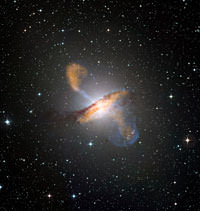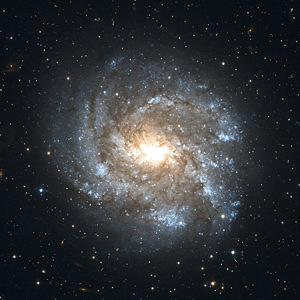Doomsday Fears Over Strange Matter
Could a scientific experiment 14 years and $8 billion in the making produce a tiny black hole that could eat the Earth? Or reduce the planet to a dead mass of "strange matter"? Two critics say yes and have sued in federal court to stop the Large Hadron Collider from smashing protons together this summer.Could a scientific experiment 14 years and $8 billion in the making produce a tiny black hole that could eat the Earth? Or reduce the planet to a dead mass of “strange matter”? Two critics say yes and have sued in federal court to stop the Large Hadron Collider from smashing protons together this summer.
Your support matters…The New York Times:
The world’s physicists have spent 14 years and $8 billion building the Large Hadron Collider, in which the colliding protons will recreate energies and conditions last seen a trillionth of a second after the Big Bang. Researchers will sift the debris from these primordial recreations for clues to the nature of mass and new forces and symmetries of nature.
But Walter L. Wagner and Luis Sancho contend that scientists at the European Center for Nuclear Research, or CERN, have played down the chances that the collider could produce, among other horrors, a tiny black hole, which, they say, could eat the Earth. Or it could spit out something called a “strangelet” that would convert our planet to a shrunken dense dead lump of something called “strange matter.” Their suit also says CERN has failed to provide an environmental impact statement as required under the National Environmental Policy Act.
Although it sounds bizarre, the case touches on a serious issue that has bothered scholars and scientists in recent years — namely how to estimate the risk of new groundbreaking experiments and who gets to decide whether or not to go ahead.
Independent journalism is under threat and overshadowed by heavily funded mainstream media.
You can help level the playing field. Become a member.
Your tax-deductible contribution keeps us digging beneath the headlines to give you thought-provoking, investigative reporting and analysis that unearths what's really happening- without compromise.
Give today to support our courageous, independent journalists.




You need to be a supporter to comment.
There are currently no responses to this article.
Be the first to respond.